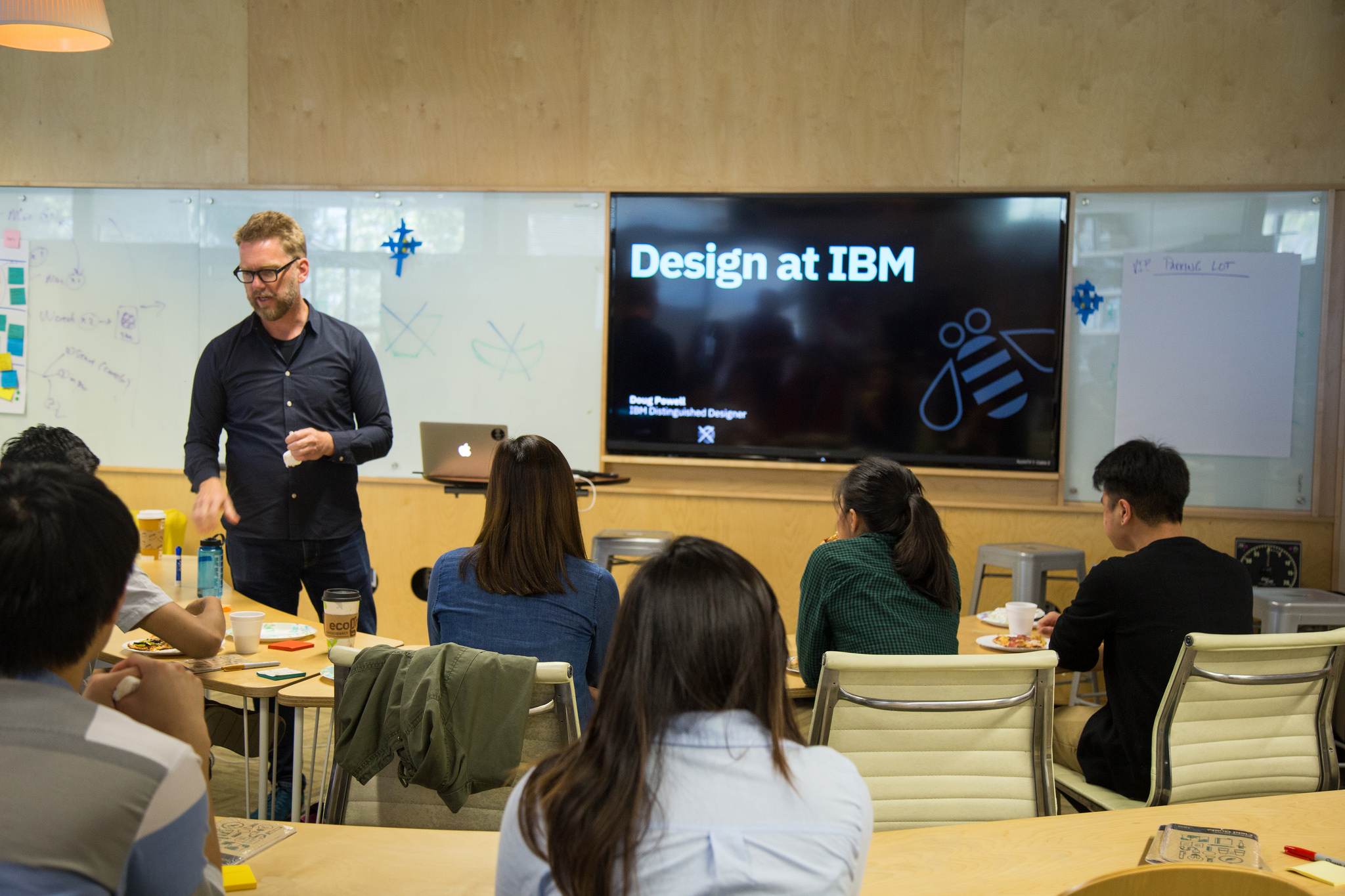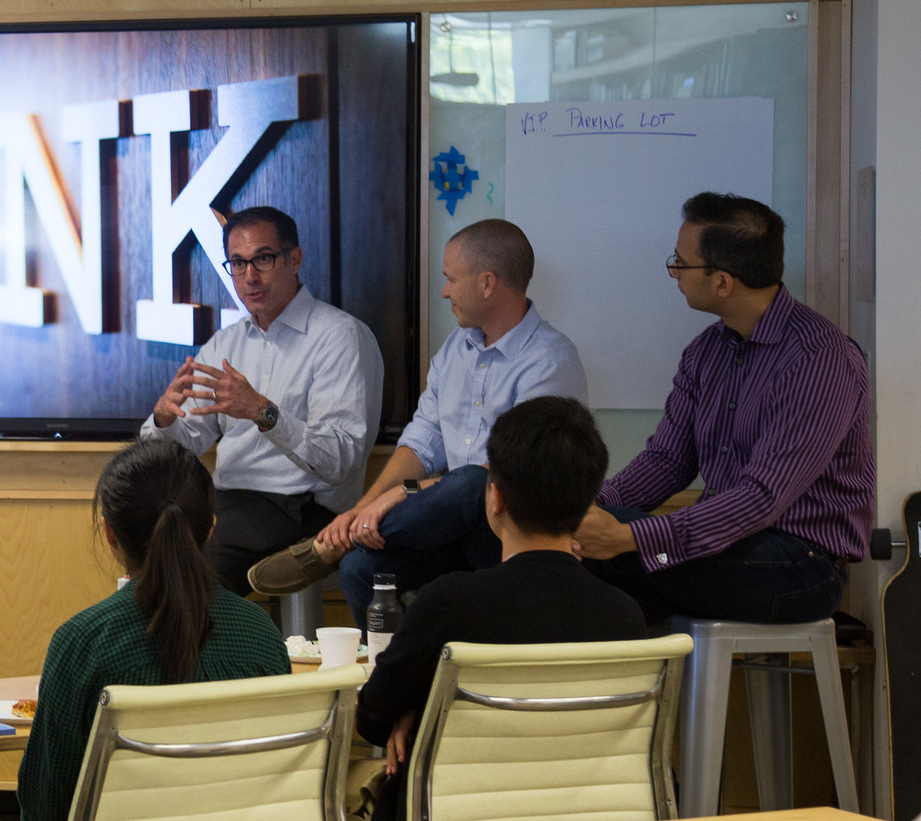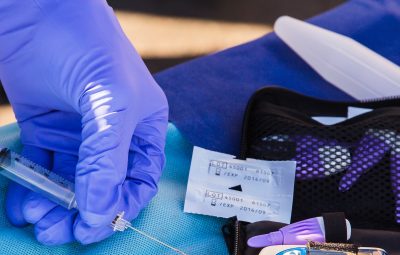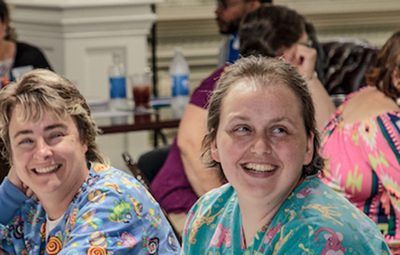IBM believes in design thinking. And design doing. So much so that throughout the company, teams can leverage IBM Design Thinking for better ideas and happier users. The Design Lab is all about design doing, so last month, IBM visited campus to facilitate a workshop for UCSD students.
Students gained insights around current IBM practices and how design plays a core role in the global giant’s business and approach and practices. Additionally, students had the opportunity to translate tose insights into better ways to engage with prospective employers for their future careers.
“It was a useful experience getting to meet the IBM design team,” said Elmer Barrera, current President of Design at UCSD. “I learned a lot about their company culture and how they’re using design to push for innovation in the way they think, which in turn translates into the products they build. I enjoyed the journey mapping activity, which we did to identify pain points in a person’s job search.”
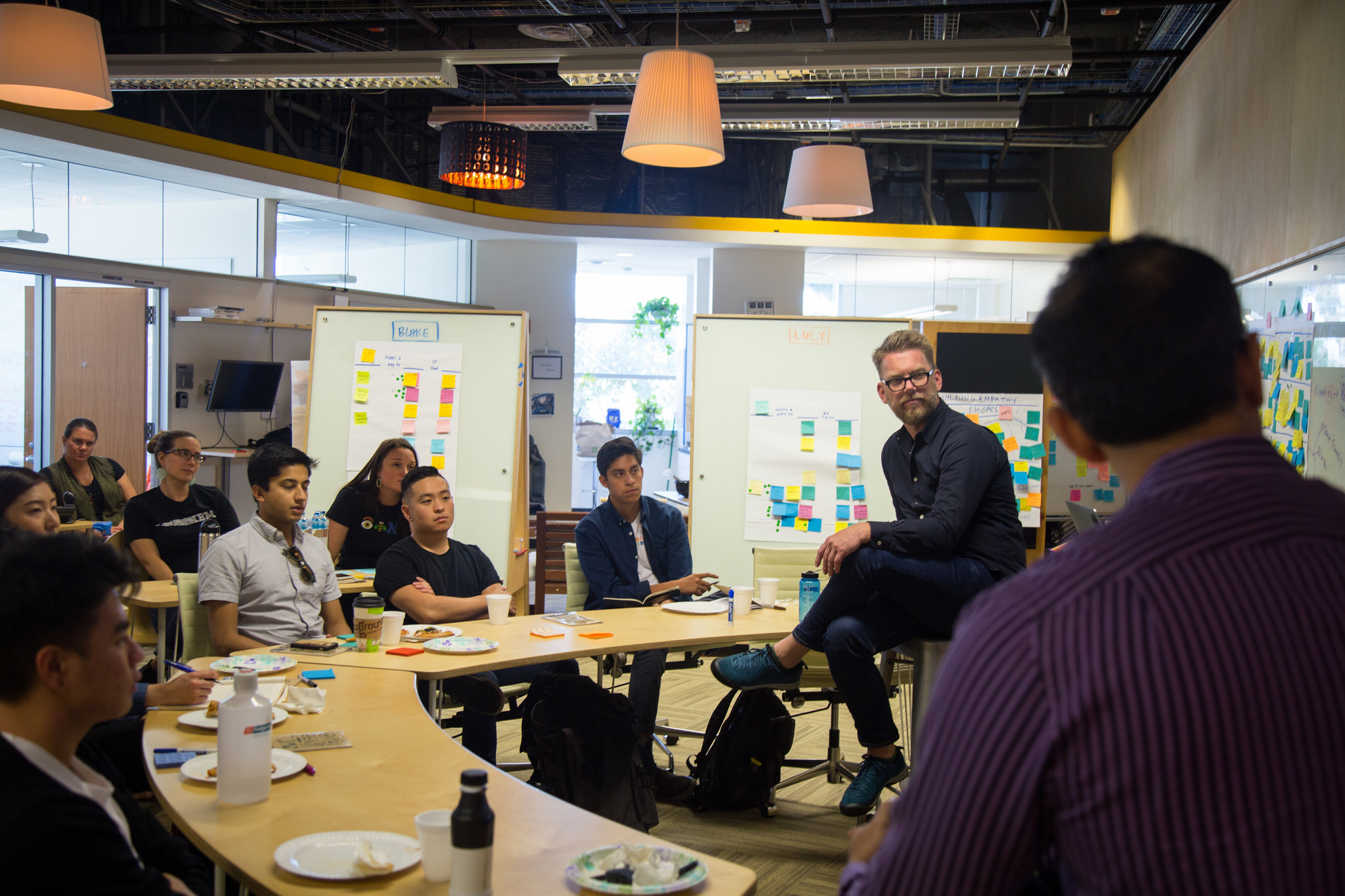
Understanding users through empathy and observation and taking a multidisciplinary approach to problem solving were key design thinking principles covered by IBM. Part of the workshop required students to collaborate in small teams to create an “as-is scenario,” often referred to as a user journey map. Students crafted need statements for undergraduate and graduate student personas
Tori Duong, Class of 2018, said, “I loved being able to hear about what design means to them and how they tackle the design process in their company. My favorite parts were definitely the ones where they had us think of problems and solutions, whether it be through sketching on our post-it notes or collaborating with each other on the journey maps. I was extremely grateful they took the time to answer our questions. It gave me a lot of insight on what I should work towards as I think about starting my career in industry.”
Ed Ngai, a UCSD graduate and former President of Design at UCSD said, “The workshop offered great insight into IBM’s design process and company culture. It was exciting to hear how a well-established, 100+ year old, company is using design to redefine its products and values. It was also a great opportunity to learn about what IBM looks for in potential candidates and how organizations like Design at UCSD can help students land jobs. Hearing from various designers and managers offered a lot of insights into IBM’s vision and how design plays a key role in achieving it.”
IBM will be returning in this Fall for a more in-depth workshop and recruiting event. IBM is also a principle partner in the Design Lab’s Center for Design Driven Transformation, a joint project with Rady School of Management focused on the intersection of design and business.
